Croatia were the first team to finish playing two games at this year’s Euros, but they were not able to win either of them.
A huge struggle for them was their defensive play.
Conceding five goals through their two games against Spain and Albania, pushing them towards the edge of elimination in the group stage of the tournament, heading into their last game in group B against Italy.
In this tactical analysis, we’ll take a look at what Croatia has been doing and where they have areas of their tactics to improve off the ball.
Firstly, our tactical analysis and scout report will be taking a look at the lineups Croatia used in their two games.
Against Spain, they started with a back-four consisting of four centre-backs in Joško Gvardiol at left-back, Marin Pongračić and Josip Šutalo at centre-back and Josip Stanišić at right-back.

After conceding three goals against Spain in their opener, Manager Zlatko Dalić made a couple of changes in his starting backline.
Gvardiol moved inside to play centre-back, and Ivan Perišić came into the lineup as left-back.
Šutalo stayed in the lineup as the right centre-back, and the gaffer put Josip Juranović in as right-back.
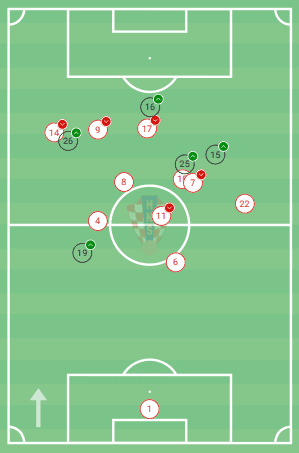
Dalić did not change his starting midfield between the two games, so he decided to keep his ways there with Luka Modrić, Marcelo Brozović and Mateo Kovačić.
They faced two different formations in the two games, the Spanish 4-3-3 and the Albanian 4-2-3-1; they decided to adjust their formation accordingly by playing in a 4-3-3 formation against Spain and with a 4-2-3-1 formation against Albania.
Croatia’s defensive struggles through their positional play
Croatia play with two wingers, namely Andrej Kramarić and Lovro Majer.
Both of them are not traditional wingers, however, and are always looking to move into the centre of the pitch in their positional play.
Kramarić plays as a second striker for the majority of games, while Majer falls back into the midfield a lot.
Because of the movement of those two, Croatia’s attacking game lacks width a lot of the time.
To help avoid this problem in possession, both full-backs are supposed to push up the field a lot and hold very high and wide positions to offer Croatia more options in the passing game.
In both games the Croats have played at the Euros thus far, all four players used as full-backs were pushing up the sidelines in possession all of the time.
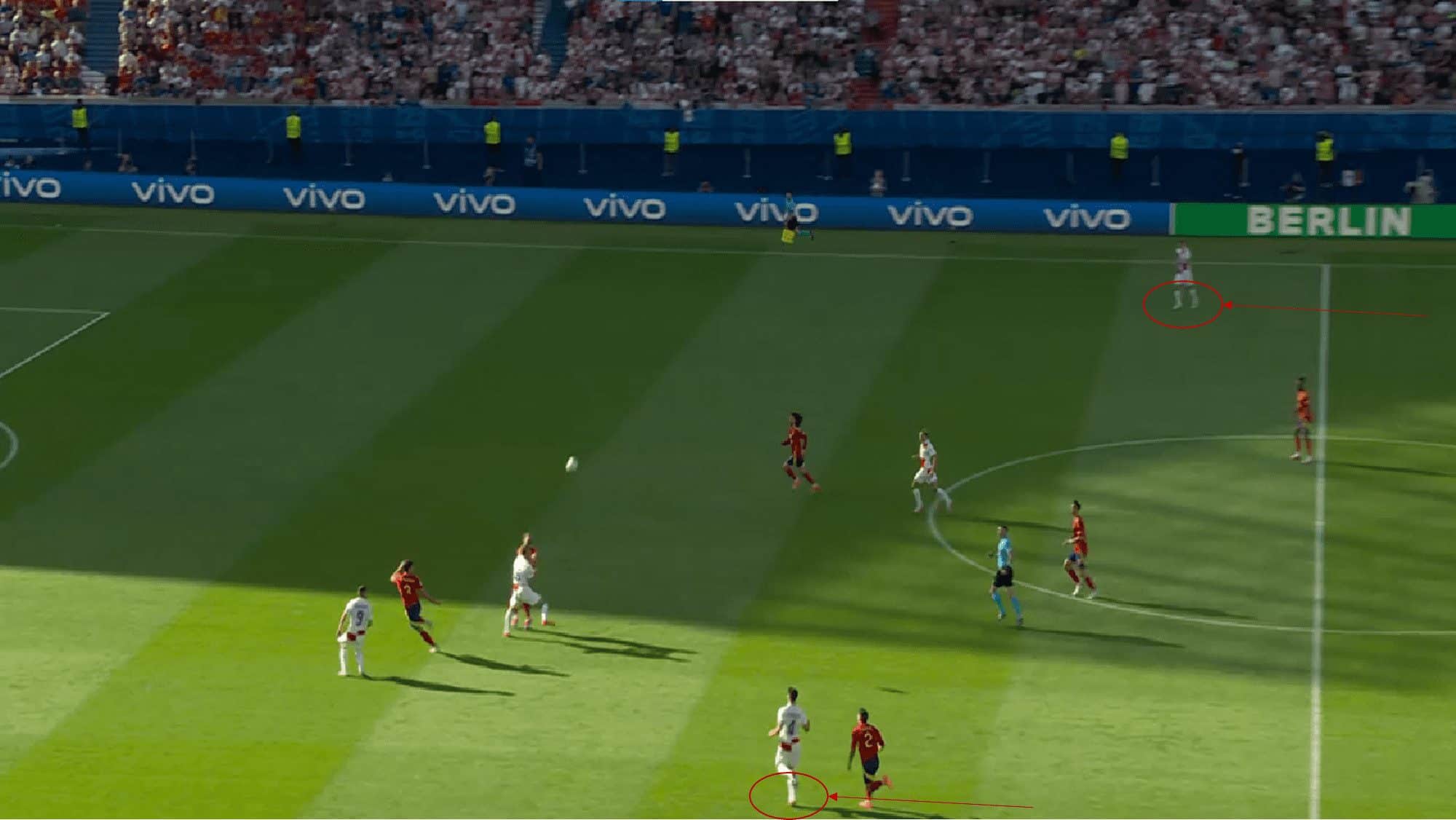
In this example, we see both full-backs Gvardiol and Josip Stanišić, pushing up very high in possession.
After losing out on the ball, both are looking to engage into a counterpress and move forward further up the pitch.
Of course, that means leaving open space behind them.
In this situation, Croatia lose the ball because Marc Cucurella makes a good play and intercepts.
In contrast, Rodri plays a one-touch lay-off to Fabián Ruiz, and the Spanish wingers relentlessly attack the open space behind the full-backs in transition.
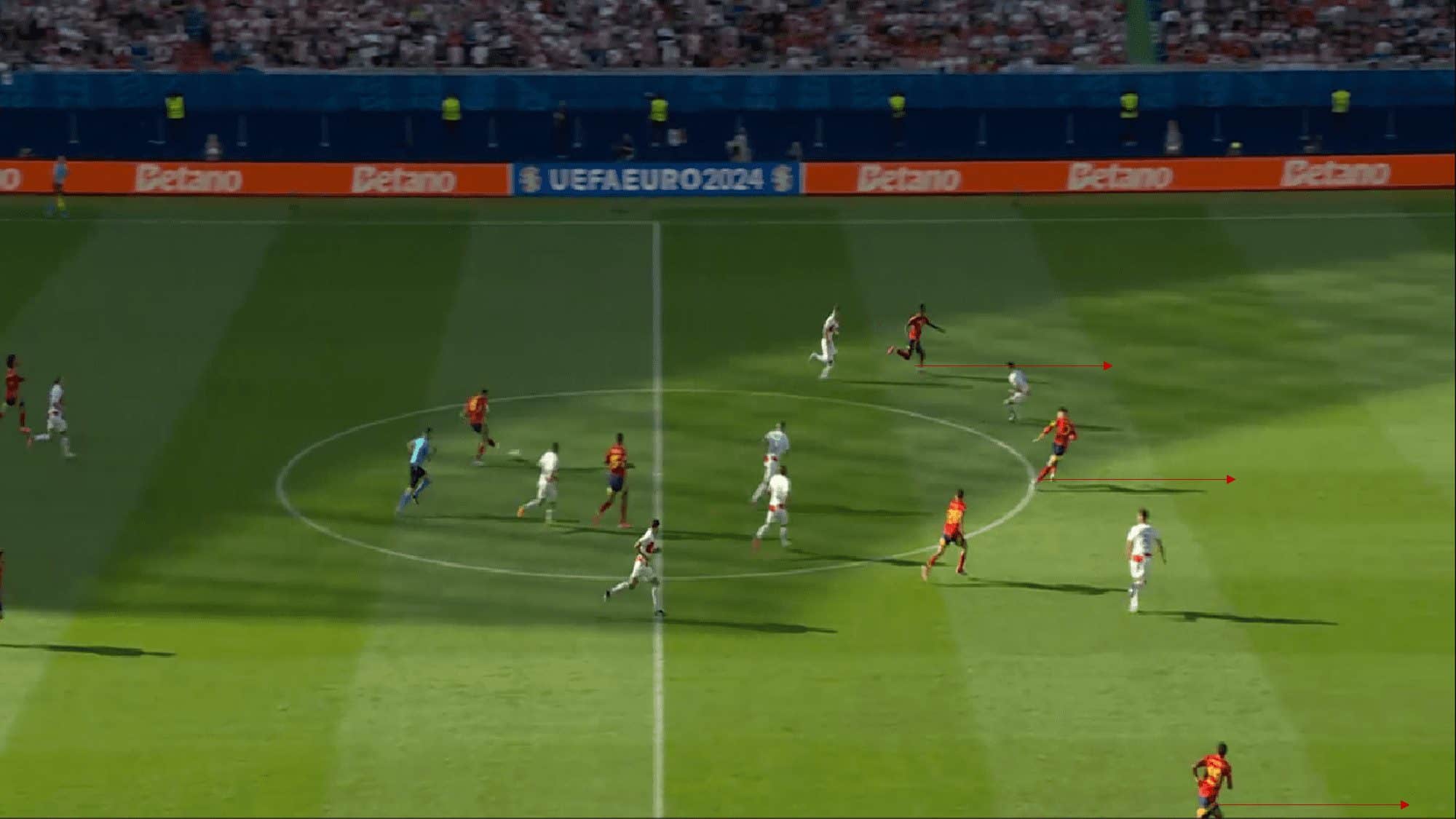
Lamine Yamal, Alvaro Morata, and Nico Williams are all making a run behind the defence.
Overall, Spain don’t just have the numbers advantage over the Croatia defence, they also have three runners in behind the defence, where Croatia have left acres of space wide open.
In this case, the right centre-back Josip Šutalo was being tasked with defending both Alvaro Morata and Nico Williams and had to make a snapshot decision on who he prioritizes to defend.
Šutalo decided to cover the pass channel to Nico Williams, which meant Fabián Ruiz was able to play an easy through ball in the path of Alvaro Morata, who finished his and Spain’s first opportunity of the game to give them the lead.
Situations like this often happened in the first games of Croatia’s tournament.
Nico Williams was able to move in behind Stanišić multiple times, and Šutalo was not able to match the Spanish wingers’ speed.
Against Albania, Perišić was pushing up even higher than Gvardiol did against Spain, which also opened up multiple opportunities for counterattacks for the Albanian attackers.
Multiple times during both games, the opposing attackers penetrated the Croatian defence without the ball and potentially went through on goal.
Šutalo really suffers through these situations; he doesn’t like being forced to make quick snapshot decisions all the time and isn’t as pacey as most of the strikers he has faced so far, which meant that he was really struggling in covering the most crucial part of the pitch.
While providing width in possession is obviously important for Croatia, the trade off they are taking right now, is really bad for them, they are allowing too many counterattacks through on goal from their opponents.
Croatia’s failing midfield press
Croatia have struggled with defending against the counterattack, yes, but it is not the only reason they are having major defensive problems in their first two games at the Euros.
If we’re looking at the defensive side of Croatia’s play, there are a couple of things that stand out.
The most important thing of those is, that Zlatko Dalić’s men are not falling back into a deep block right after losing the ball, they are rather trying to press aggressively with their midfield to put pressure on their opponents build-up.
As previously stated, Croatia are playing with a three-man midfield, consisting of Marcelo Brozović as a holding midfielder and Luka Modrić and Mateo Kovačić as the two central midfielders in their 4-3-3 or 4-2-3-1 formation.
Against the ball, they are working within their 4-3-3 shape most of the time.
While the Croatian attackers are rarely pressing the opposition defence, the team triggers their press when the ball is played into midfield.
Croatia’s pressing shape
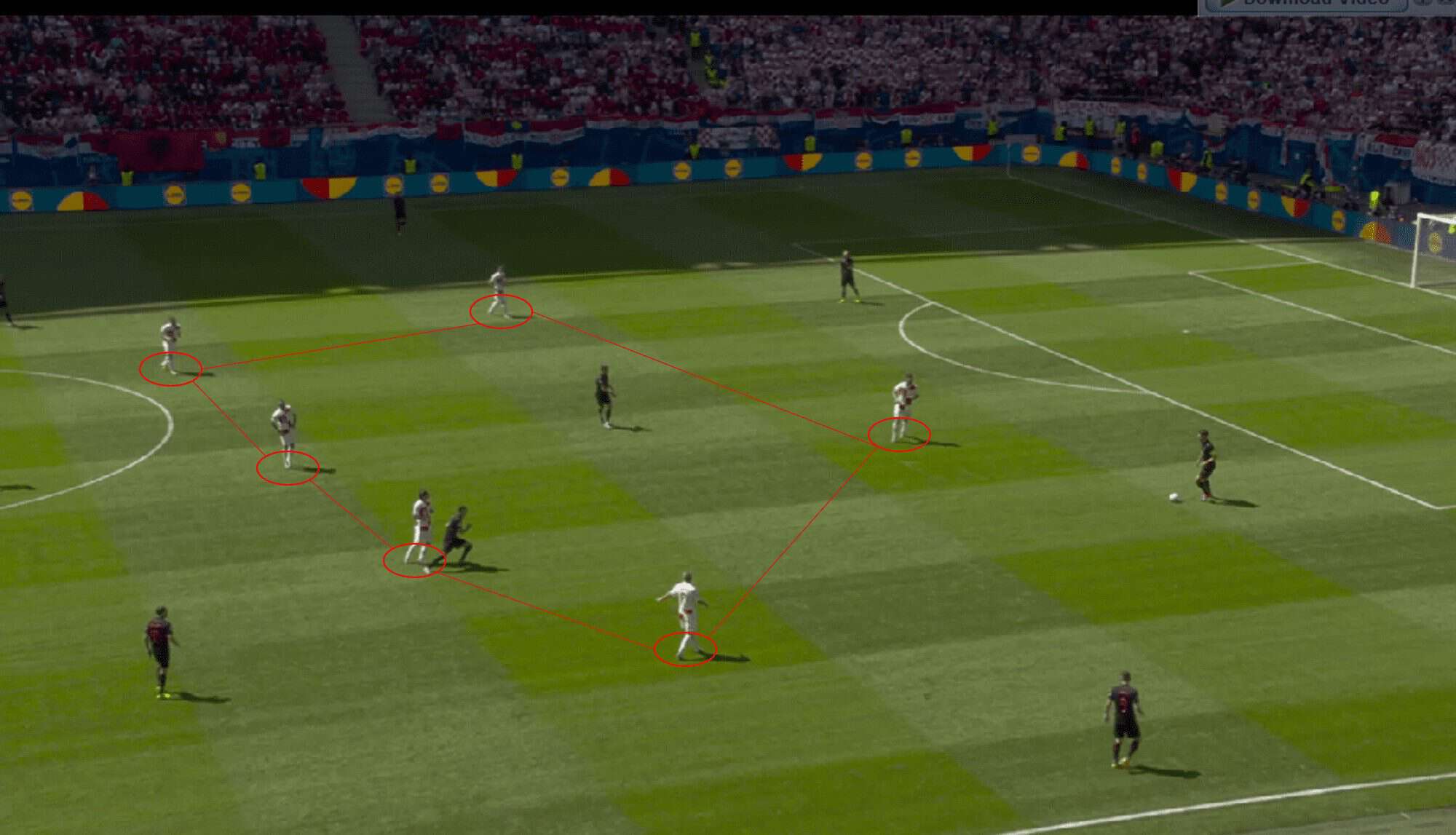
Croatia are actively looking to create a numbers advantage in the centre of the field.
Their defensive shape in pressing situations forces the opposing team to either pass the ball out to their full-back or right into their formation, where they can easily move into actively pressing the ball carrier.
Croatia’s midfielders are crucial in these situations, as they are triggering the press, and they are the ones who need to actively win the balls when they are played into the centre.
The problem in their pressing lies in the mixture of ball-oriented and man-oriented pressing.
In the situation pictured above, Modrić is obviously man-oriented toward covering the Albanian midfielder, while Brozović and Kovačić are playing ball-oriented.
Even though Modrić covers his man, he can still not prevent his man from receiving the ball from his centre-back, which shouldn’t be a problem anyway.
Still, the Albanian player manages to lay off the ball to his teammate, who is in a lot of space.
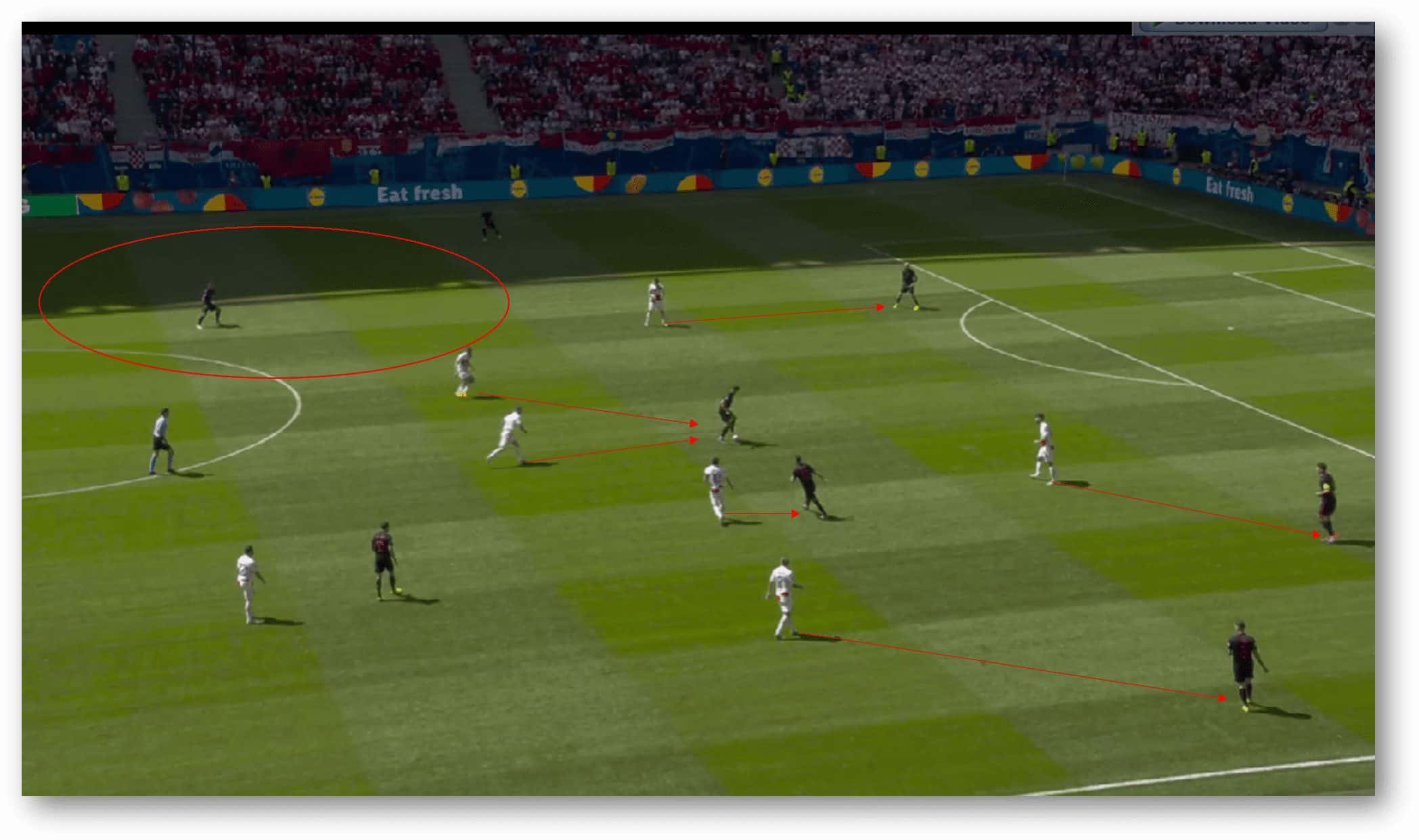
While the entire frontline plays man-oriented football to trigger the press out of every single pass imaginable, the midfield plays ball-oriented football.
Both Brozović and Kovačić are pressing forward onto the Albanian player because his receiving the ball with his back turned towards the playing direction is an obvious pressing trigger.
However, because Croatia created a numbers advantage in the centre and the right-hand side of defence, they are leaving a lot of space on the left.
The distances Brozović and Kovačić have to cover are too big to create pressure instantly, which meant that Albania could play the ball towards the right back and attack the space behind the Croatian midfield.
Croatia’s struggles
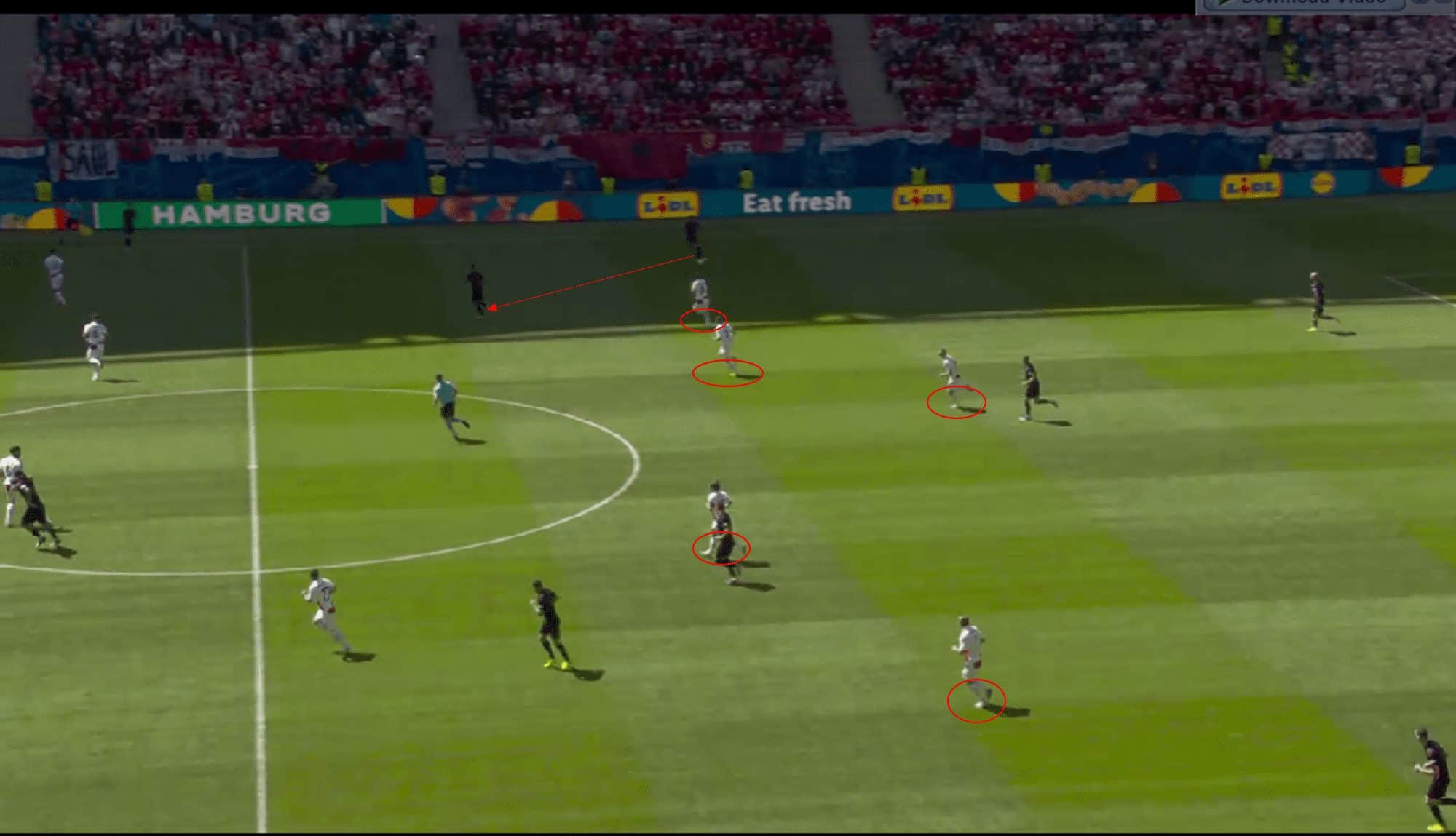
These types of situations happen far too frequently and always put Croatia on the back foot in terms of defending.
While their shape and the overall idea behind their midfield pressing are pretty smart, they are rarely able to generate pressure.
They would be better off playing completely man—or ball-oriented than playing their hybrid press.
The Spanish midfield, which is packed with a lot of ball-playing stars, in particular, managed to pick apart the Croatian press multiple times to progress the ball into their final third rather quickly.
Croatia need to be more compact in their entire approach if they want to concede fewer goals, which also means that their attackers and midfield need to fall back more, or their defensive line needs to push up more to close the playing space right behind Brozović.
Croatia’s offside trap and their struggles with crosses
If we are solely looking at the goals that Croatia conceded, there is one pattern of play that ended up in them conceding a goal in both games.
They did not manage to stop a left-footed cross curled towards goal from their left-handed defensive side and conceded an easy finish at the near post.
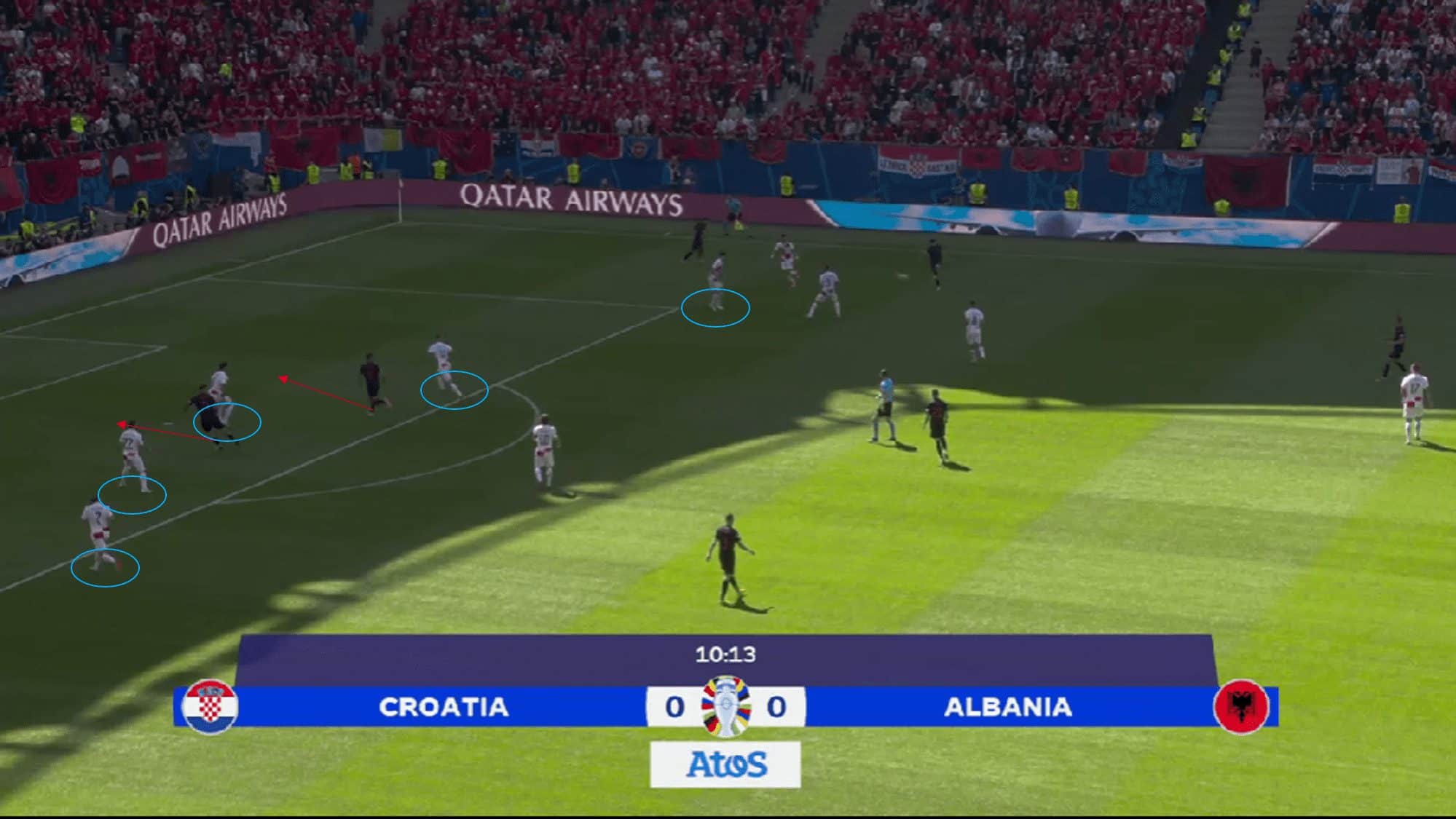
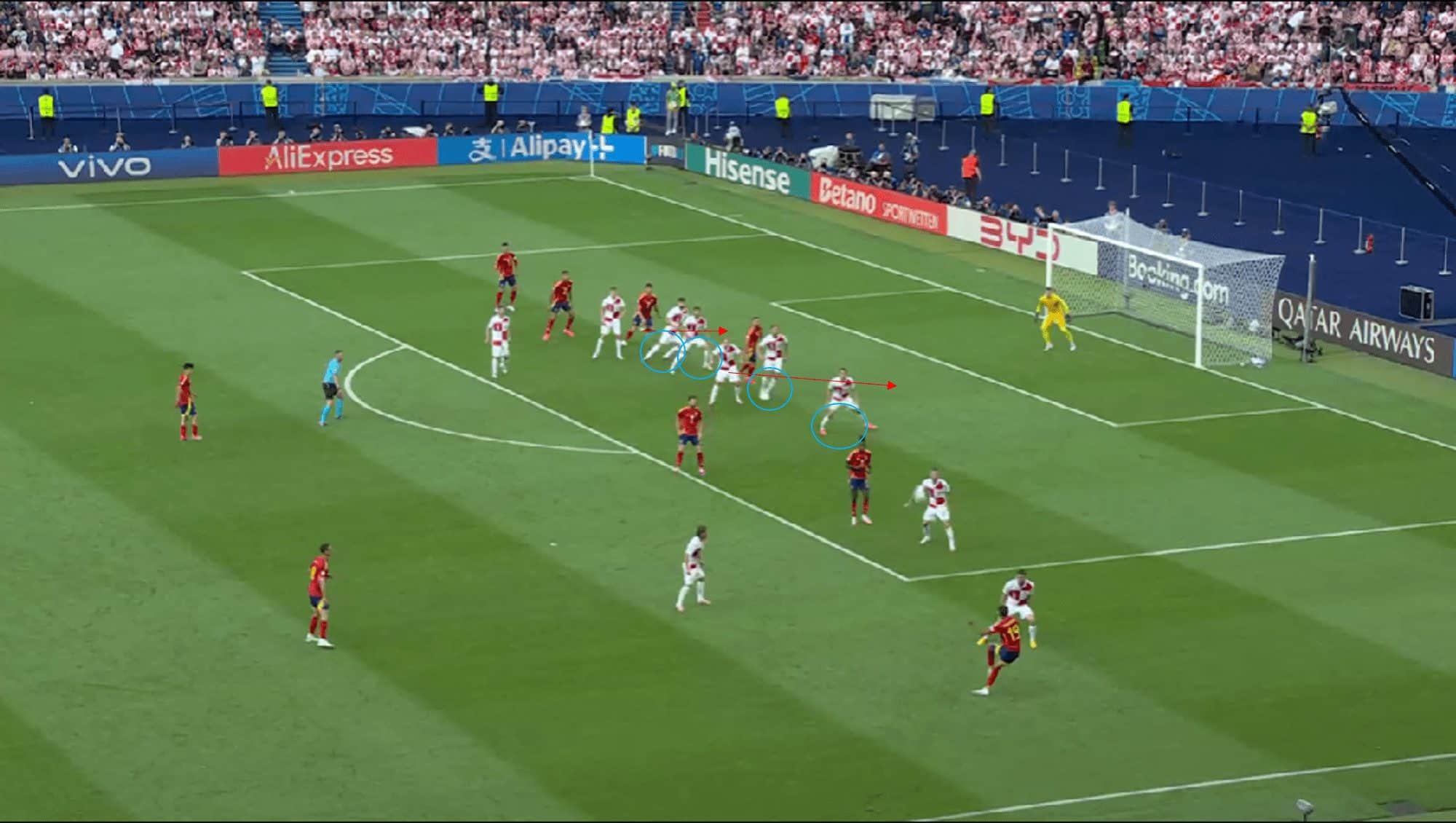
In these types of situations, Croatia play with a high line of defence.
Instead of falling back right in front of their goal, the Croatian defenders push up the field in a coherent line to play the opposing attackers offside.
While the timing of this offside trap isn’t bad, it’s still incredibly vulnerable to these half-field crosses curled towards goal.
Dalić’s men take away every opportunity to impede the opposing team.
Also, Croatia is not playing in a very man-oriented manner in these situations.
Both goalscorers were wide open and able to finish the chances they got with ease.
This zone coverage, combined with the offside trap, simply did not work out for the Croatian defence, and that was the reason they conceded two unnecessary goals.
There are two ways in which Zlatko Dalic can tackle this issue.
The first point is obviously preventing the cross.
In both situations, Croatia have the numbers advantage out on the wing but barely press the crosser.
They need to be more aggressive in these situations to not allow perfectly placed balls like Lamine Yamal’s cross.
The second point is actively marking man-to-man in their box.
While their zone coverage overall is not inadequate, the Croatian defenders need to be more decisive and actively assign themselves onto the opposing attackers to prevent them from finishing without any impeding from their side.
Conclusion
Overall, Croatia’s performances have not been terrible throughout their first two games.
However, they are struggling in some parts of the defensive aspects of the game.
They are facing Italy’s dynamic attack at the brink of elimination, and they need to get their defensive game back to the top level and stop the breakthroughs on counterattacks behind their full-backs because it is putting their centre-backs in really bad spots and forcing them into hard decisions.
Dalić also needs to find a way to revamp is pressing processes, while the thought behind their midfield pressing is excellent, the execution on the pitch is rather rough and opens up a lot of space for opposing teams.
The Euros are not over for Croatia and this team has way too much talent to not improve throughout the tournament, it will be interesting to see how they are trying to solve their problems quickly.






Comments